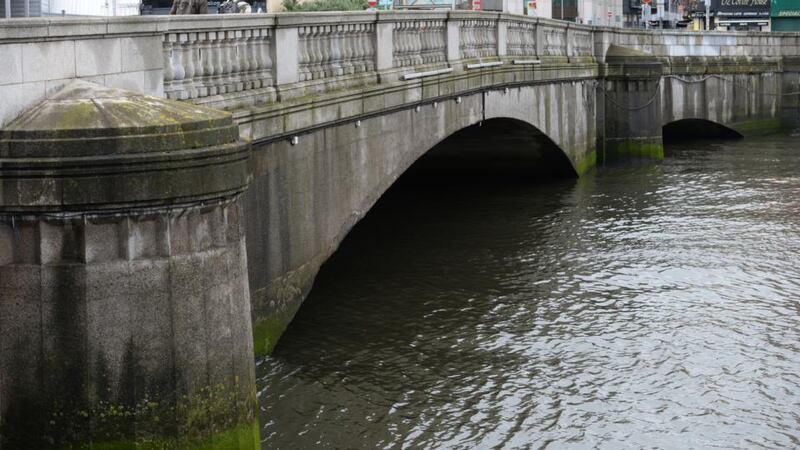Consultants are to be engaged by Dublin City Council to undertake "special inspections" to assess the extent of structural defects in two of the city's most heavily used traffic bridges.
The council has identified cracks, leaks and other faults in Butt Bridge and Talbot Memorial Bridge, which span the river Liffey on either side of the Custom House.
The defects were detected as part of its own programme of bridge inspections, but the council has decided it needs to appoint external engineering consultants to undertake a specialist assessment of their condition.

In particular the consultants will be asked to “determine the cause, extent and severity of defects” in the bridges; to determine most cost effective levels of repairs and rehabilitation works so that bridges remain “safe and in a usable condition”; and to assess the “remaining service life of the bridges”.
Butt Bridge, built in 1932, carries four lanes of northbound traffic from Tara Street. “Recent structural inspections have indicated various defects on the structure,” the council said. Repairs are needed to the parapets, cracks have been identified in the surface and in the support structures, the joint material “has failed” and there is leakage and corrosion in a number of areas.
Southbound
Talbot Memorial Bridge built in 1978 is also a four-lane road, but running southbound to Georges Quay from the direction of Amiens Street. Despite being a much younger structure, many parts of the bridge are in a worse condition than Butt Bridge. The expansion joints are described as being in a “very poor” condition, and there are cracks and leaks throughout most parts of the bridge. The parapets have been found to be in a poor condition with “corrosion and vegetation”, and the underside of the road way is sagging and cracking.
Deputy city engineer John Flanagan said the condition of the bridges did not pose a risk to public safety, but specialist advice was needed to ensure they remained sound.
“Bridges typically have a 110-year design life so we want to see what we can do to extend that through good maintenance.”
Both bridges were fitted with “movement joints” he said, which allow the structure to cope with changes in temperature and pressure, but these features had a limited life span and needed specialists care, he said.
It was too early to say how much work would be needed on the bridges, or what effect it would have on city traffic, Mr Flanagan said. However the council was conscious of their importance as “major traffic links across the city” and this would have to be taken into consideration as part of any repair and maintenance work.











